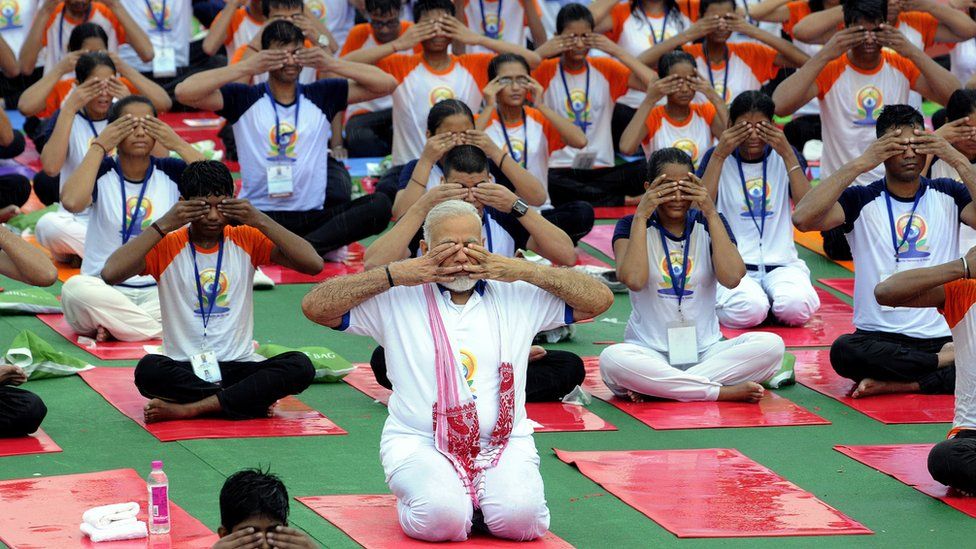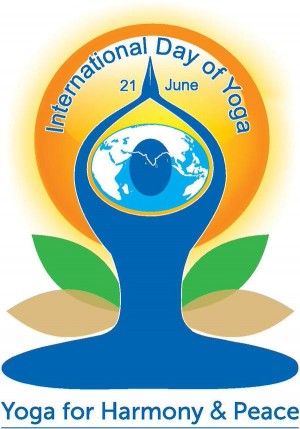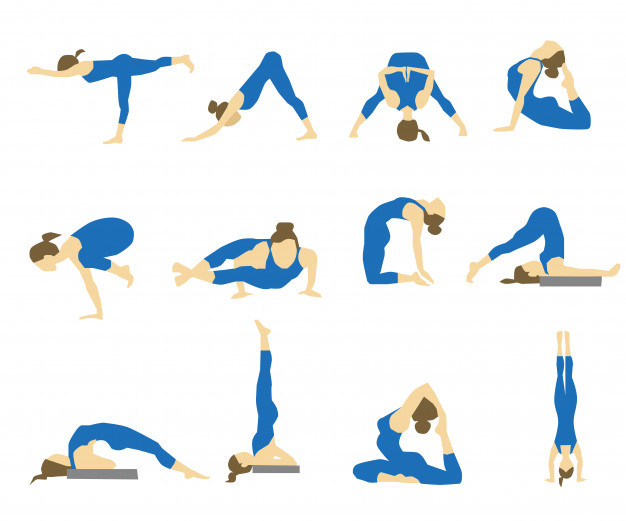
June 21 of every year is celebrated as the International Day of Yoga. It was first observed in the year 2015 and since then it is carried out in India and across the world enthusiastically. In India, Ministry of AYUSH every year makes the necessary arrangements to celebrate this day. Current Indian Prime Minister Narendra Modi is known to promote practicing Yoga. Organizing a camp every year in which hundreds of people participate and perform yoga together has become a norm for Indian PM to celebrate the International Yoga Day. This year it carries the theme “Yoga for well-being” which is much relevant at present as the world is still recovering from the impact of the coronavirus disease. The International Day of Yoga aims to raise awareness about the benefits of practicing Yoga worldwide.

Yoga is an ancient physical, mental and spiritual practice that aligns the mind and soul. The word ‘yoga’ is originated from Sanskrit language which means to join or to unite. The word symbolizes the union of body and consciousness. The first main national event to commemorate Yoga Day was held at Rajpath in New Delhi in 2015. Around 35,985 people including PM Modi participated in this event creating a world record for the largest yoga class and for the largest number of participating countries at that time.
Last year, the main national event to commemorate the International Day of Yoga (IDY) was organised in Ladakh which was lead by Prime Minister of India. This year the Permanent Mission of India to the United Nations has organized a virtual event to celebrate 7th annual International Yoga Day. The event will be organized from 8:30 am to 10:00 am and President of the United Nations General Assembly and the Deputy Secretary-General of the United Nations will address the nation. Then there will be demonstrations of Yoga asanas to improve physical, mental, emotional and spiritual health.
Origin of the Idea of International Day of Yoga

The Prime Minister of India Narendra Modi, first proposed the idea of an International Day of Yoga. He suggested this idea during his speech at the United Nations General Assembly (UNGA), in September 2014. Roots of Yoga lies in India but people in many countries around the world are now practicing it. So, it can be said that it is a gift that India has given to other countries.
June 21 has been noticed as the longest day in the Northern Hemisphere and known as summer solstice. It has a special significance from the perspective of Yoga. According to the Indian mythology it is believed that it was the day of the summer solstice on which Lord Shiva began imparting the knowledge of Yoga to the world and became the Adi Guru of Yoga. Therefore, to mark this occasion Narendra Modi suggested the idea of International Day of Yoga on June 21. The proposal was approved by 177 co-sponsoring countries out of the 193 member states of the United Nations.
History of Yoga:

It is a well known fact that Yoga is originated in India and it is an invaluable gift of India’s ancient tradition to the world. The practice of Yoga can be traced back to the time of Lord Shiva who is known as Adi Guru. He has been considered as the master of Yoga who taught this art to the world. The beginnings of Yoga were developed over thousands of years ago in the Indus civilization in Northern India. Yoga was first mentioned in one of the oldest sacred texts called the Rigveda. Yoga is an important part of Indian culture and civilization. During the pre-Vedic time, yoga is said to have been a part of the lifestyle of the Indians. Maharishi Patanjali organized and codified yoga postures known as asanas in the Yoga Sutras. In 1893, Swami Vivekananda in his address to the World Parliament of Religions in Chicago had also introduced yoga to the West.
Yoga and Health Benefits:
Yoga is an exercise that not only gives physical or external benefits but also develops the internal aspects of a person. It embodies unity of mind and body, thought and action, restraint and fulfillment. It also brings harmony between man and nature. Yoga provides a holistic approach to health and well-being.
The outbreak of the Covid- 19 pandemic has exacerbated psychological suffering and mental health problems among the people across the whole world. It continues to upend lives and livelihoods of people globally including depression and anxiety in its second wave. Pandemic-related restrictions continue in various forms in many countries and this situation has highlighted the urgent need to address the mental and physical health dimension of the people. Here are some general benefits of Yoga that not only help us to heal from stress and prevent our body from diseases but also direct us towards the positive approach in life.
Physical Benefits of Yoga:
- Yoga improves strength, balance and flexibility as slow movements and deep breathing increase blood flow in a body and also warms up muscles.
- It helps in easing pain in body and improving mobility in people with lower back pain.
- By doing yoga on regular basis your body posture becomes perfect.
- Yoga enhances strength and balance in body. It also improves flexibility.
- Practicing yoga can also reduce inflammation and enhances immunity.
- Yoga helps in keeping your joints healthy.
Psychological benefits of Yoga:
- Yoga reduces the levels of stress hormone in the blood stream and stabilizes the breathing process of our body. This helps us to relax and make us able to think more clearly.
- Those who practice yoga on regular basis have a good concentration power. This power helps the body to focus on different aspects like movements, breathing, etc. Thus, this aids in minimizing excess noise from our mind and helps us to achieve clarity over the things.
- Yoga practice helps us to gain confidence within ourselves and make us able to fight the distress.
Asanas of Yoga:

Asana basically are the body postures which we make while practicing the yoga. They are the exercises that help our body to be fit and fine. Asana is the physical practice and is also another name for the poses or postures of yoga. It is derived from the Sanskrit word which means “seat,” specifically for meditation. Yoga involves several asanas that have its own benefits. Usually, anybody can perform most of the asanas as they are generally divided into two categories i.e. simple to advance.
Simple Asanas or basic asanas:
- Mountain Pose ( Parvat Asana)
- Chair Pose (Utkatasan)
- Triangle Pose (Trikonasana)
- Tree pose (Vraksh Asana)
- Bridge Pose (Setubandhasan)
- Mountain Pose ( Parvat Asana)
- Chair Pose (Utkatasan)
- Triangle Pose (Trikonasana)
- Tree pose (Vraksh Asana)
- Bridge Pose (Setubandhasan)
Advanced Asanas:
- Crow pose (Kakasana)
- Forearm stand (Pincha Mayurasana)
- Hand-to-foot pose (Utthita Hasta Padangustasana)
- Mermaid Pose (Eka Pada Rajakapotasana)
- Lotus Pose (Padmasana)
- Monkey pose (Hanumanasana)
- Side plank variation (Vasisthasana)
- Toe stand (Padangustasana)
- Wheel Pose (Urdhva Dhanurasana or Chakrasana)
- Headstand Pose (Sheershasana)
Yoga and the World:

The growing trend of Yoga around the world, embraces people to stay healthy and rejuvenated. In ancient time this art was used to practice by Indian gods and these gods taught this art to their students. Later, many people from India promoted this art around the world. Now, today it is practiced in various forms around the world and continues to grow in popularity. The Yoga got its universal recognition by the introduction of International Day of Yoga. From past few years people from different countries are appreciating the art of Yoga and they also find it medically suitable for the health.
After the formation of the international yoga day, practitioners in more than 100 countries have planned events to celebrate this day. In its global action plan on physical activity 2018–2030: More active people for healthier world, the World Health Organization (WHO) mentions yoga as a means to improve health. UNICEF says that kids can practice many yoga poses without any risk and can get the same benefits that adults do. After this initiation many countries which do not know our language, tradition, or culture, are now connecting to India through yoga. Over time practices evolved and yoga has undergone a significant shift in the last 100 years as part of globalization. In this shift physical postures in particular have become more important.
